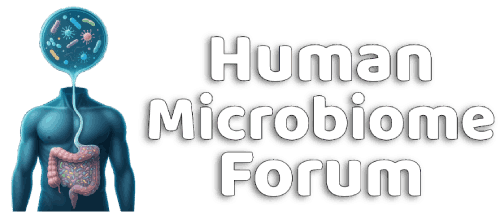Michael Harrop
Well-known member
https://www.science.org/content/article/some-our-key-gut-microbes-likely-came-cows-and-we-re-losing-them
https://www.science.org/doi/10.1126/science.adj9223
https://www.science.org/doi/10.1126/science.adj9223
Editor’s summary
The guts of urbanized people worldwide are known to contain less microbial biodiversity than those of humans living rurally. The worry is that the loss of key species contributes to the increasing prevalence of poor metabolic health among urbanized people. By searching for key genes involved in cellulose degradation in metagenome-assembled genomes, Moraïs et al. discovered cellulolytic bacteria in humans. All candidate Ruminococcus species assembled active cellulosomes, enzyme complexes capable of degrading microcrystalline cellulose. Three species were distinguished with phylogenies indicating derivation from primate and ruminant hosts, and they showed specific host preferences and ongoing host adaptation. The occurrence of cellulolytic bacteria in humans reveals that a complicated process of dynamic co-evolution occurs in the gut and is possibly regulated by environment. —Caroline Ash
Abstract
Humans, like all mammals, depend on the gut microbiome for digestion of cellulose, the main component of plant fiber. However, evidence for cellulose fermentation in the human gut is scarce. We have identified ruminococcal species in the gut microbiota of human populations that assemble functional multienzymatic cellulosome structures capable of degrading plant cell wall polysaccharides. One of these species, which is strongly associated with humans, likely originated in the ruminant gut and was subsequently transferred to the human gut, potentially during domestication where it underwent diversification and diet-related adaptation through the acquisition of genes from other gut microbes. Collectively, these species are abundant and widespread among ancient humans, hunter-gatherers, and rural populations but are rare in populations from industrialized societies thus indicating potential disappearance in response to the westernized lifestyle.
Structured Abstract
INTRODUCTION
Mammals, including humans, rely on their gut’s microbial community to break down plant cell wall components, notably cellulose and associated polysaccharides. However, there is limited evidence for cellulose fermentation in the human gut despite the benefits of cellulose-containing dietary fiber for gut-microbiome health and overall human well-being.
RATIONALE
By investigating the presence of heretofore undescribed bacterial species within the human-gut microbiota that degrade complex cellulosic polysaccharides, we can reveal their potential sources and understand their intricate adaptations to diverse host lifestyles and diets. Insight into the prevalence and abundance of these bacteria across diverse mammalian species and a wide range of human populations will provide critical knowledge of their evolutionary origins, ancestral associations, and trajectories that enabled their incorporation into the human gut.
RESULTS
Previously unknown ruminococcal species were discovered in the human-gut microbiota and provisionally named Candidatus Ruminococcus primaciens, Ruminococcus hominiciens, and Ruminococcus ruminiciens, all of which assemble functional multienzymatic cellulosome systems that degrade crystalline cellulose. These species are prevalent among the great apes and other nonhuman primates, ancient human societies, hunter-gatherer communities, and rural populations. Although widespread geographically they are conspicuously rare within industrialized societies. Notably, they exhibit distinct host preferences wherein R. hominiciens is associated primarily with humans and great apes and R. primaciens predominantly inhabits the gut of nonhuman primates and ancient human populations. Moreover, these species display host-specific diversification, forming distinct clades within the phylogenetic tree and aligning with their respective hosts. Our evolutionary analysis strongly suggests that R. hominiciens likely originated in the ruminant gut and later transferred to humans, possibly during domestication. High gene expression levels were observed for these species, reflecting their considerable activity in their respective gut systems. Furthermore, their gene expression profile aligns with their hosts’ dietary preferences, highlighting their adaptability. Our analyses show that these novel species adapt to their host ecosystems by acquiring genes from co-resident gut microbes. The human-associated strains possess functional adaptability highlighted by the acquisition of genes that can degrade specific plant fibers of monocots such as maize, rice, and wheat—major components of the human diet. Likewise, the nonhuman primate–associated strain exhibits the potential for degrading chitin, a polymer abundant in the insect exoskeleton, part of the diet of nonhuman primates. Our data provide insight into the ongoing colonization of these species within the human gut, particularly those originating from ruminants and nonhuman primates. Specific strains appear to represent intermediates between primate- and rumen-gut ecosystems, as evidenced by their gene content during establishment in the human intestine.
CONCLUSION
Our accumulated data indicate that ruminococcal lineages were more widespread in the past, evidenced by the high prevalence and abundance of these strains in ancient human populations and among hunter gatherer communities and rural societies, combined with their global distribution and low prevalence in industrialized societies. Differences in their prevalence among human populations may reflect dietary variation between industrialized and nonindustrialized societies. Dietary fiber intake appears to be a key factor as high-fiber diets are reported among Hadza hunter-gatherers whereas lower fiber intake is observed in rural populations and the least consumption of fiber occurs in industrialized societies. These findings collectively imply a decline of these species in the human gut, likely influenced by the shift toward westernized lifestyles, potentially impacting energy balance and other health-related aspects. The presence of transitional strains that recently colonized the human gut indicates that ruminants and nonhuman primates could be a source and reservoir for cellulosome-producing ruminococcal strains, which continue to colonize and adapt to the human gut. There may be potential for intentional reintroduction or enrichment of these species in the human gut through targeted dietary approaches and specialized probiotics.
- Format correct?
- Yes
